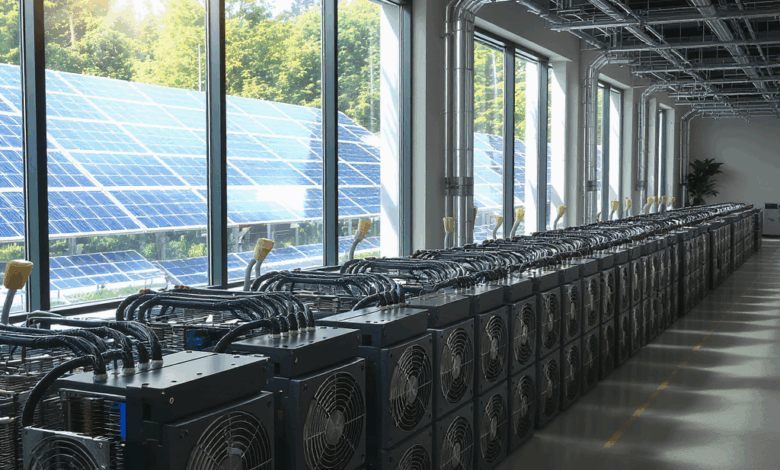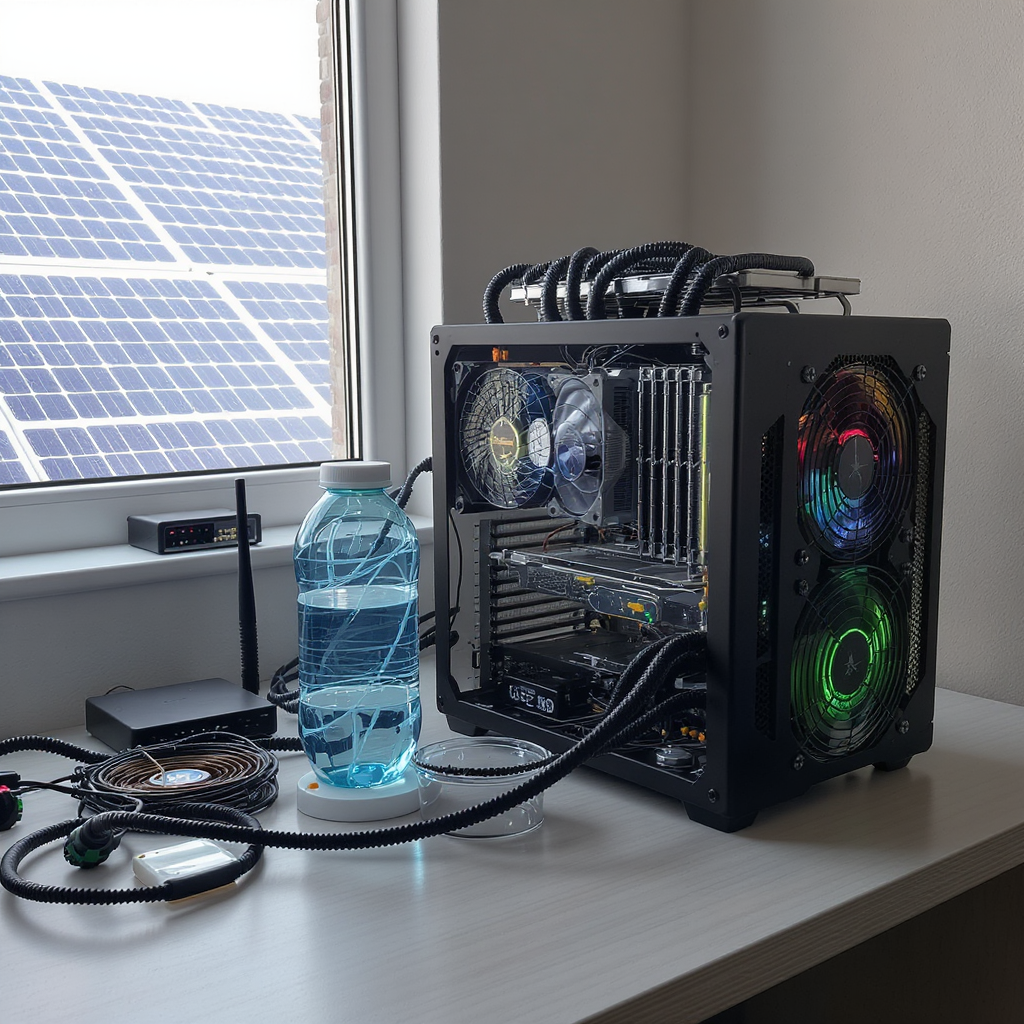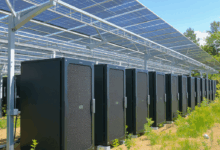Sustainable Crypto Mining Techniques – A Practical Step-by-Step Guide

Preparing for Sustainable Crypto Mining
1. Understand the Basics of Crypto Mining and Sustainability
Before starting, familiarize yourself with what cryptocurrency mining is and why sustainability matters. Crypto mining involves validating transactions and securing blockchain networks, often requiring significant energy. Sustainable mining focuses on reducing environmental impact by using cleaner energy and efficient technology.
2. Check Prerequisites and Gather Resources
- Hardware: Ensure you have mining equipment such as ASIC miners or GPUs.
- Energy Source: Assess availability of renewable energy (solar, wind, hydro) in your area.
- Cooling Infrastructure: Plan for advanced cooling systems, like immersion cooling, if possible.
- Internet Connection: Stable and reliable internet for mining operations.
- Mining Software: Choose software compatible with your hardware and preferred cryptocurrency.
Warning: Avoid starting mining without proper power infrastructure to prevent damage to hardware and excessive energy costs.
3. Evaluate Your Location for Renewable Energy Integration
Identify if your mining site can access renewable energy:
- Research local energy providers about green energy options.
- Consider relocating mining operations to areas with abundant renewable energy, such as regions with hydroelectric power.
- Calculate potential savings and environmental impact reductions.
Time estimate: 1-2 days for research and decision-making.
4. Plan Your Budget and Timeline
- Budget for hardware upgrades and energy infrastructure.
- Allocate time for setup and testing.
Tip: Investing upfront in energy-efficient hardware and infrastructure saves money and energy long-term.
Implementing Sustainable Crypto Mining Techniques
1. Upgrade to Energy-Efficient Mining Hardware
- Research the latest ASICs or GPUs designed for energy efficiency.
- Purchase models with higher hash rates per watt.
- Install hardware following manufacturer guidelines.
Note: Energy-efficient hardware reduces electricity consumption and improves profitability.
2. Set Up Renewable Energy Sources
- If on-site renewable energy is possible, install solar panels or wind turbines.
- Alternatively, arrange contracts to source electricity from renewable providers.
- Configure your mining operation to prioritize these energy sources.
Difficulty: Moderate; may require professional assistance.
3. Implement Advanced Cooling Systems
- Evaluate cooling needs based on hardware heat output.
- Consider immersion cooling by submerging equipment in thermally conductive liquids.
- Install cooling infrastructure ensuring proper safety and maintenance access.
Warning: Improper cooling setup can damage hardware; follow safety guidelines strictly.
4. Integrate with Smart Grid Technologies
- Contact your local utility to explore demand response programs.
- Configure mining equipment to adjust power usage based on grid demand.
- Use smart meters and energy management software to monitor consumption.
Benefit: Helps optimize energy use and supports grid stability.
5. Explore Alternative Consensus Mechanisms
- Research cryptocurrencies using Proof-of-Space (PoSpace) or Proof-of-Capacity (PoC).
- Set up mining software compatible with these mechanisms.
- Test mining performance and energy consumption.
Note: These alternatives significantly reduce energy usage compared to traditional Proof-of-Work.
Verifying and Troubleshooting Your Sustainable Mining Setup
1. Verify Hardware Efficiency and Energy Consumption
- Monitor power usage using energy meters or software tools.
- Compare consumption against expected benchmarks for your hardware.
- Check mining output to ensure hardware operates optimally.
Tip: Use software like HWMonitor or manufacturer-provided utilities for accurate readings.
2. Confirm Renewable Energy Usage
- Review energy bills or smart meter data to confirm renewable sourcing.
- If using on-site generation, check inverter and system output.
- Adjust settings if non-renewable energy is still being consumed.
3. Test Cooling System Performance
- Measure hardware temperature under load.
- Ensure temperatures remain within safe operating limits.
- Listen for unusual noises or check for leaks if using liquid cooling.
Warning: Overheating can reduce hardware lifespan and cause failures.
4. Troubleshoot Common Issues
- Hardware not performing: Restart mining software; update drivers; check connections.
- High energy consumption: Verify hardware settings; inspect cooling efficiency.
- Renewable energy supply inconsistent: Use battery backup or grid power during downtime.
5. Regular Maintenance and Monitoring
- Schedule periodic hardware cleaning and inspection.
- Update mining software and firmware regularly.
- Monitor energy usage trends to identify inefficiencies.
Checkpoint Summary: You have learned how to prepare for sustainable crypto mining by understanding prerequisites and sourcing renewable energy. Then, you implemented energy-efficient hardware, advanced cooling, smart grid integration, and alternative consensus mechanisms. Finally, you verified system performance and learned troubleshooting techniques to maintain a sustainable mining operation.
Remember, sustainable crypto mining is a continuous process. Regularly review your setup and stay updated on new technologies to keep your mining efficient and environmentally responsible.
Advanced Power Management and Mining Operation Optimization
Dynamic Voltage and Frequency Scaling (DVFS) for Mining Hardware
Implementation Steps:
- Access your mining rig’s BIOS or firmware settings.
- Enable DVFS features if supported by your hardware.
- Use specialized software (e.g., MSI Afterburner for GPUs or custom ASIC firmware) to fine-tune voltage and frequency parameters.
- Gradually lower voltage while maintaining stable hash rates to reduce power consumption.
- Continuously monitor system stability and hash rate performance.
Warning: Improper DVFS adjustments can cause system instability or hardware damage. Proceed incrementally and verify stability after each change.
Load Balancing Across Multiple Mining Units
Implementation Steps:
- Deploy mining management software capable of controlling multiple rigs (e.g., Hive OS, Awesome Miner).
- Configure workload distribution based on each unit’s efficiency and temperature profile.
- Set priorities to shift load dynamically during peak energy cost periods or cooling limitations.
- Use scripts or APIs to automate load balancing decisions based on real-time performance data.
Tip: Balanced load distribution maximizes overall mining efficiency and extends hardware lifespan.
Real-Time Energy Cost Optimization
Implementation Steps:
- Integrate smart energy meters capable of tracking electricity costs in real time.
- Connect mining operations to energy price APIs or utility demand response signals.
- Implement automated scripts that ramp mining intensity up or down according to electricity price fluctuations.
- Schedule heavy mining tasks during off-peak, lower-cost periods.
Benefit: This strategy significantly reduces operational expenses and environmental impact.
Expert-Level Cooling and Environmental Control Techniques
Precision Immersion Cooling Implementation
Implementation Steps:
- Select a high-grade dielectric fluid suitable for immersion cooling (e.g., 3M Novec fluids).
- Design closed-loop cooling systems with heat exchangers and fluid circulation pumps.
- Install temperature and flow sensors with feedback controls to maintain optimal thermal conditions.
- Implement redundant safety systems to detect leaks or temperature anomalies.
- Schedule regular fluid quality and system integrity inspections.
Warning: Immersion cooling requires specialized knowledge to avoid hardware corrosion and ensure operator safety.
AI-Driven Environmental Monitoring and Control
Implementation Steps:
- Deploy IoT sensors to continuously monitor temperature, humidity, and airflow within mining facilities.
- Utilize machine learning models to predict thermal hotspots and optimize fan speeds, cooling cycles, and humidity controls.
- Integrate AI with building management systems to dynamically adjust ventilation and cooling infrastructure.
- Set up alerting systems for deviations from optimal environmental parameters.
Professional Tip: AI-driven environmental management enhances cooling efficiency while minimizing energy consumption.
Waste Heat Recovery and Utilization
Implementation Steps:
- Capture heat expelled from mining hardware cooling systems using heat exchangers.
- Redirect recovered heat to auxiliary systems such as water heating, greenhouse climate control, or local heating grids.
- Implement heat storage solutions (e.g., thermal batteries) to balance heat availability and demand.
- Monitor system efficiency and optimize heat distribution.
Benefit: Waste heat recovery improves overall site energy efficiency and reduces carbon footprint.
Automation and Intelligent Mining System Management
Automated Firmware and Software Updates with Rollback
Implementation Steps:
- Establish a version control system for mining software and firmware.
- Implement continuous integration pipelines to test updates in a controlled environment.
- Schedule automated deployment of verified updates during low-activity periods.
- Configure automatic rollback mechanisms to revert updates upon detection of anomalies.
Professional Advice: Automated update management minimizes downtime and maintains system security.
Predictive Maintenance Using Machine Learning
Implementation Steps:
- Collect extensive operational data including temperatures, hash rates, power consumption, and error logs.
- Train machine learning models to identify patterns indicative of impending hardware failure.
- Integrate predictive alerts into maintenance workflows to schedule proactive hardware servicing.
- Continuously refine models with new data to improve prediction accuracy.
Warning: Predictive maintenance requires careful data management and validation to avoid false positives.
Scripting and API Integration for Workflow Automation
Implementation Steps:
- Utilize mining management software with robust API support.
- Develop custom scripts to automate routine tasks such as pool switching, miner reboots, and performance tuning.
- Schedule scripts to run based on triggers like hash rate drops or temperature thresholds.
- Monitor automation logs and implement safeguards to prevent unintended disruptions.
Tip: Automation reduces manual workload, increases responsiveness, and enhances operational consistency.
By mastering these advanced techniques, mining professionals can significantly elevate their sustainable crypto mining operations, achieving superior energy efficiency, operational reliability, and environmental stewardship.

Celebrating Your Achievement and Verifying Mastery
Recognizing Your Success
Congratulations on completing this comprehensive guide on sustainable crypto mining techniques! By working through each section, you have gained valuable insights into preparing, implementing, optimizing, and maintaining eco-friendly mining operations. Your dedication to understanding energy-efficient hardware, renewable energy integration, advanced cooling, and intelligent management marks a significant step toward responsible and profitable crypto mining.
Skill Verification Checklist
- I can confidently explain the fundamentals of sustainable cryptocurrency mining.
- I have assessed and sourced renewable energy options suitable for my mining setup.
- I am capable of selecting and configuring energy-efficient mining hardware.
- I understand and can apply advanced cooling solutions, including immersion cooling.
- I can implement smart grid integration and manage energy consumption dynamically.
- I am familiar with alternative consensus mechanisms that reduce energy use.
- I regularly monitor and troubleshoot my mining operation to maintain efficiency.
- I have explored automation techniques and predictive maintenance to optimize performance.
If you can affirm these points, you have successfully mastered the core competencies of sustainable crypto mining.
Continued Learning and Skill Development Pathways
Expanding Your Expertise
To build on your current foundation, consider exploring these next steps:
- Advanced Power Management: Dive deeper into Dynamic Voltage and Frequency Scaling (DVFS) and load balancing across multiple mining units to further optimize power usage.
- AI and Automation: Learn how artificial intelligence can enhance environmental controls and predictive maintenance.
- Emerging Technologies: Stay informed about new consensus algorithms and energy storage solutions that can revolutionize mining sustainability.
Recommended Resources
- Online courses on blockchain and sustainable technology platforms.
- Industry webinars and conferences focusing on green crypto mining.
- Technical forums such as BitcoinTalk, Reddit’s r/EcoCryptoMining, and dedicated mining communities.
Setting Goals
- Implement at least one advanced optimization technique in your mining operation within the next quarter.
- Join a community or network to exchange knowledge and stay updated with industry trends.
Troubleshooting Resources and Ongoing Support
Reliable Help Channels
- Mining Software Support: Utilize official forums and customer service for your mining software and hardware.
- Energy Providers: Consult renewable energy suppliers for insights on sustainable power sourcing.
- Technical Communities: Engage with online groups such as Stack Exchange (Cryptocurrency), Discord servers, and Telegram channels focused on crypto mining sustainability.
Staying Current
- Subscribe to newsletters from trusted sources covering cryptocurrency and green technology.
- Follow expert blogs and social media accounts specializing in sustainable mining practices.
Building Connections
- Network with other sustainable miners to share best practices and troubleshooting tips.
- Participate in local or virtual meetups focused on cryptocurrency and environmental responsibility.
“Sustainable crypto mining is an evolving journey. With your solid foundation and ongoing commitment, you are well-equipped to adapt, innovate, and thrive in this exciting field.”
Keep pushing forward with confidence, knowing that your skills and knowledge position you as a mindful leader in the future of cryptocurrency mining.

